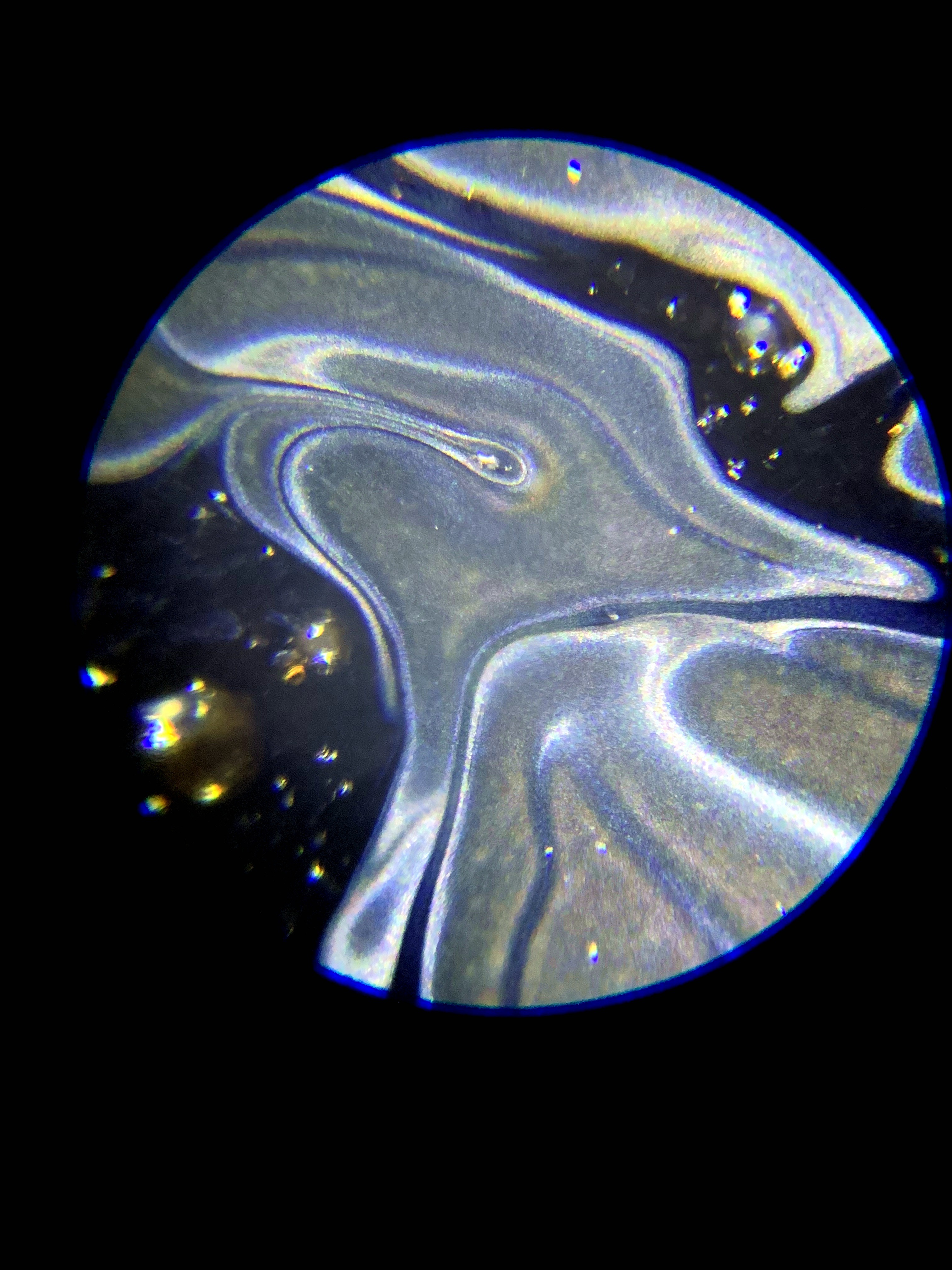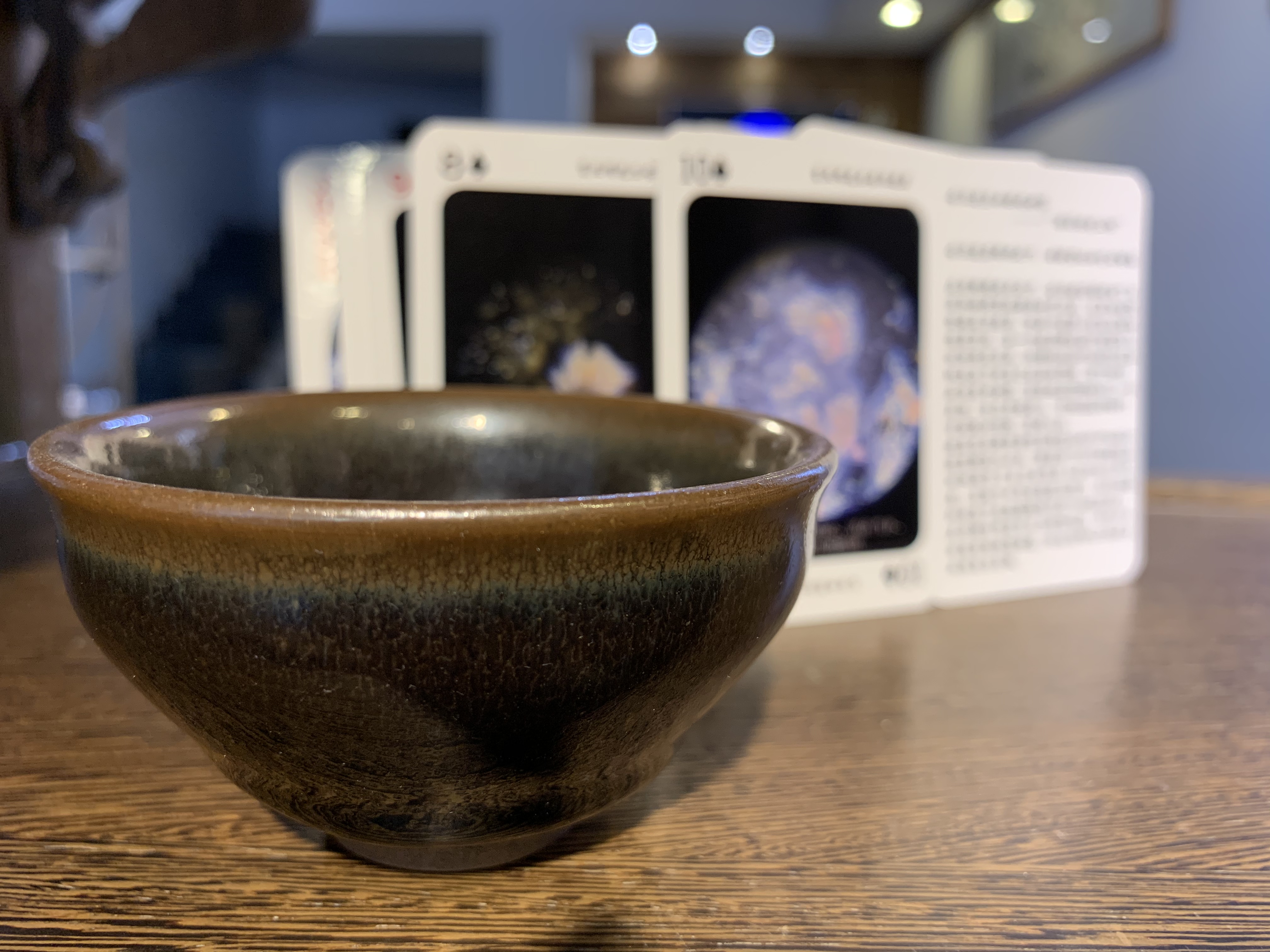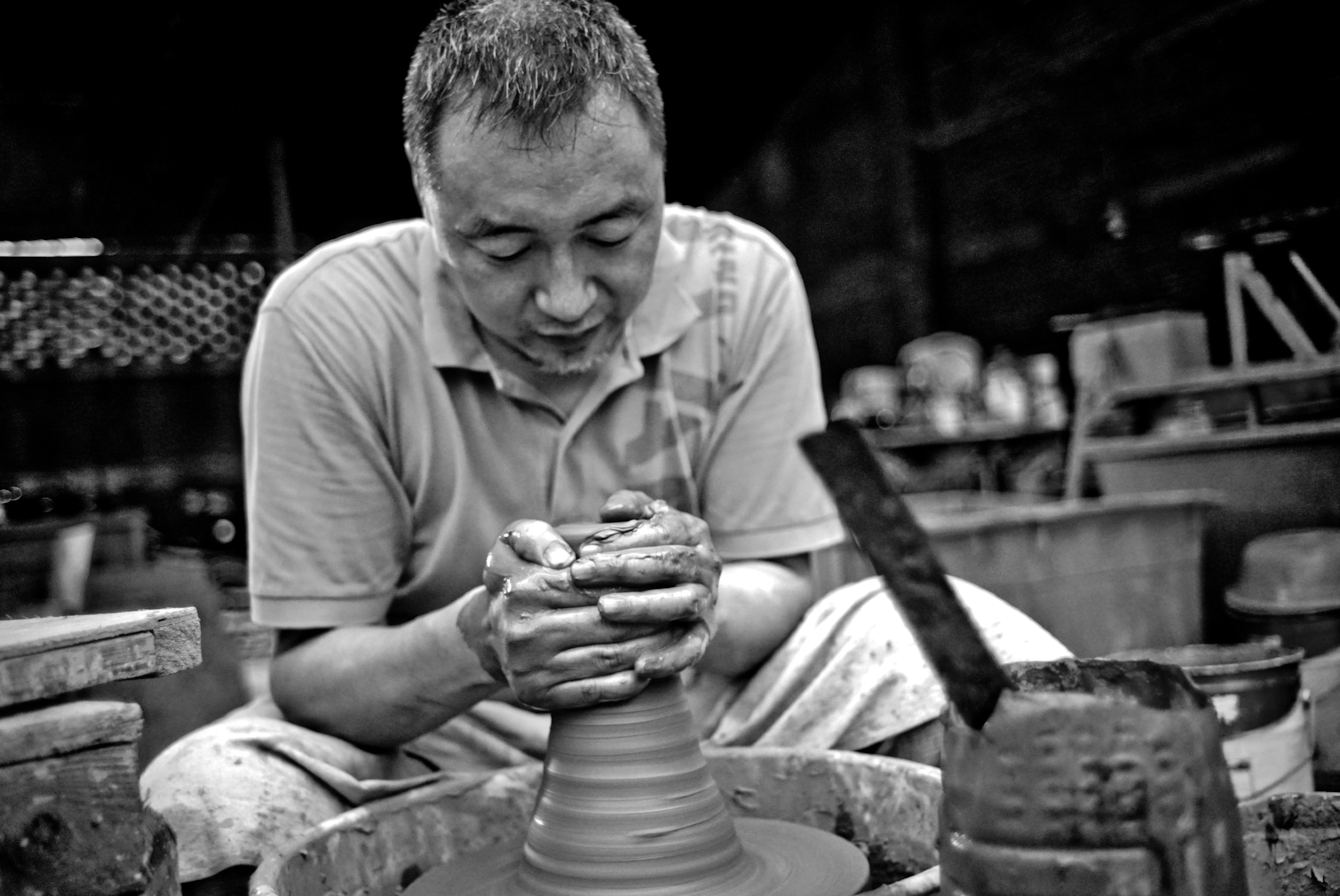Jian Zhan black porcelain was once considered among scholars and literati as being the best teaware for use in tea competitions during the Song Dynasty (960-1279). Nowadays, the style is experiencing a resurgence in popularity as more and more people appreciate Jian Zhan porcelain for its unique shape and profound cultural significance.
However, for Chinese craftsman Xiao Jieming and his wife Li Yutong, the biggest charm of Jian Zhan lies in the beauty hidden in its crystalline structures. "This pattern resembles the face of a young girl, and that looks like a cute dolphin," Li says, holding a stack of Jian Zhan picture cards in her hands during a recent interview with China.org.cn.
A picture taken via a magnifying camera shows the pattern hidden in the crystalline structure of a Jian Zhan ware fired by Chinese craftsman Xiao Jieming. [Photo provided to China.org.cn]
Though the ceramic body is traditionally light in color, Jian Zhan wares were often glazed in dark colors and feature special patterns such as the "hare's fur," "oil-spot," and "partridge feather" randomly produced on account of excess iron in the glaze being forced out during firing.
With a passion for this style of pottery, Xiao and Li spend a lot of time appreciating Jian Zhan pieces and accidentally found that when observed through magnifiers, the glaze appears to render various images, such as animals, flowers, and meteor showers.

A picture taken via a magnifying camera shows the pattern hidden in the crystalline structure of a Jian Zhan ware fired by Chinese craftsman Xiao Jieming. [Photo provided to China.org.cn]
"Of course, an image may have a distinct interpretation in the eyes of each distinct person. So, what you see from the crystalline glaze may reflect your emotions," Li says. "When I stare at patterns embedded in the glaze, I feel calm and peaceful."
In order to share this microscopic world with a larger audience, the couple has been taking pictures of their favorite patterns using magnifying cameras and have launched related cultural and creative products.
Xiao calls their discovery the "mystery" of Jian Zhan, as the patterns found on each ware are unique. "The natural firing techniques lead to great variation; there is no way to control for one style or another. The beauty of each piece is its own by pure happenstance," he explains. All the Jian Zhan pieces pictured in their exhibits were fired in their kiln.
Xiao learned about Jian Zhan at a young age, having grown up in Jianyang in southeast China's Fujian province, where the black glaze porcelain is believed to have originated. "When I was a child, I heard that Jian Zhan was a kind of antique. A complete piece was worth several thousand yuan in the 1980s."

A Jian Zhan ware fired by Chinese craftsman Xiao Jieming sits beside picture cards showing patterns hidden in Jian Zhan's crystalline structures. [Photo provided to China.org.cn]
Used as the tea set for the royal family, Jian Zhan achieved a high prestige in the Song Dynasty. Famous for its nobility and beauty, Jian Zhan was variously exported overseas through the Silk Road and via sea. However, after the Song Dynasty, the firing techniques traditionally used to make Jian Zhan were not handed down to future generations.
Impressed by the subtle effects of the glaze, Xiao and Lu began to collect Jian Zhan wares and fragments in the early 2000s. At that time, there were some domestic workshops producing the ceramics in Xiao's hometown. "In comparison, we found that the products of those workshops were quite different from the pieces fired in the Song Dynasty. Their colors and patterns were not diverse enough."

Chinese craftsman Xiao Jieming shapes the clay of one of his Jian Zhan wares. [Photo provided to China.org.cn]
To replicate the incredible appearance of Song Dynasty Jian Zhan, Xiao decided to learn the specific firing techniques needed and embarked on his decade-long research and experimentation. He read essays, consulted ceramics professionals, learned from his failures, but kept trying.
Through trials and errors, Xiao finally produced an "oil-spot" piece in 2016 with a similar scale of beauty to the Jian Zhan wares the Song masters achieved. Based on this encouraging breakthrough, he then explored firing other styles and succeeded in recreating almost all types of glaze patterns with comparable quality to the Song Dynasty wares.
The craftsmanship of Jian Zhan was listed as a Chinese national-level intangible cultural heritage in 2011, and more people have since become involved in preserving the traditional skill. "Now, there are two or three thousand workshops in Jianyang, and an industrial chain for Jian Zhan production has taken shape," Xiao says.
"But there is much room for the development of cultural sectors related to Jian Zhan," Xiao continues. "Jian Zhan is not just a tea cup. It epitomizes the essence of traditional Chinese aesthetics and boasts deep spiritual values."
Ready to make a long-term commitment to reviving Jian Zhan, the couple says they will strive for innovation while sticking to tradition and develop more related cultural and creative products so that the time-honored art can bring enjoyment to more people.
 简体中文
简体中文



